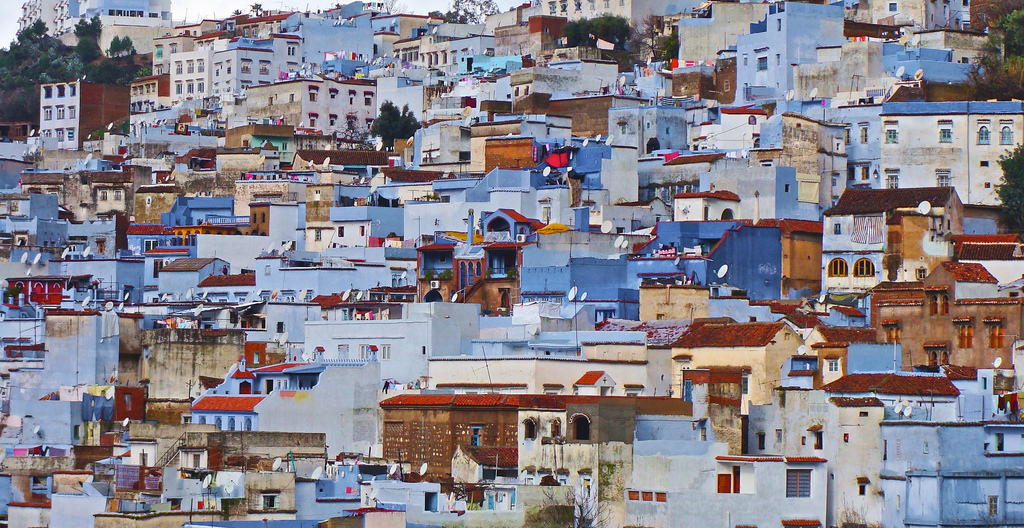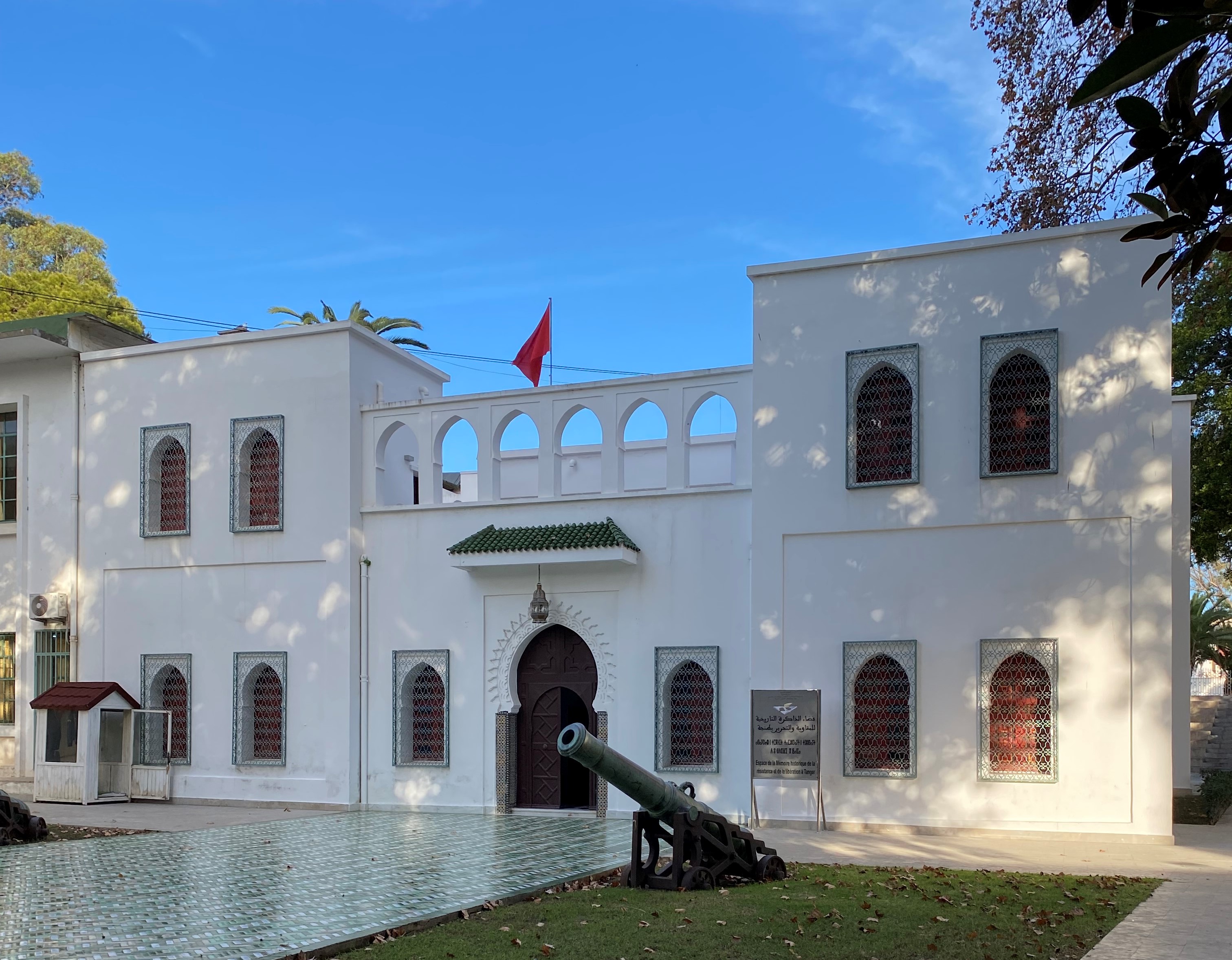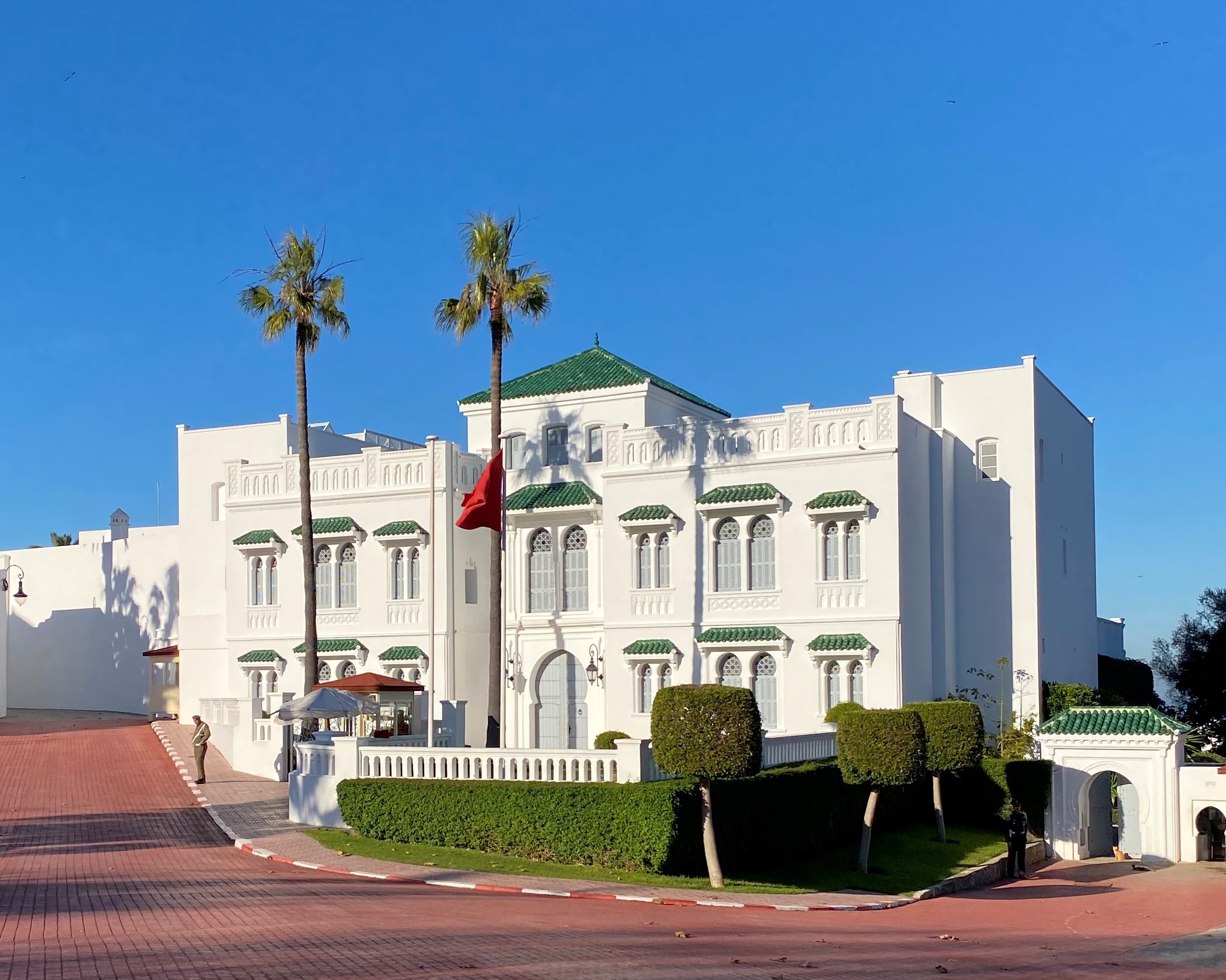|
Marshan Palace, Tangier
The Marshan Palace is a palace of the King of Morocco in the Marshan neighborhood of Tangier, Morocco. Legislative Assembly of the Tangier International Zone The building was initially erected in the early 1950s as the seat of the Legislative Assembly of the Tangier International Zone. ''Maison de Tanger'' Following the independence of Morocco in 1956 and its proclamation as a kingdom on 14 August 1957, the building was repurposed as a property of the Monarchy. In the early years following independence, it was known as the ("House of Tangier"). From 27 to 30 April 1958, it was the venue of the Tangier Conference, a gathering of representatives from newly independent Morocco and Tunisia and from the Algerian National Liberation Front (FLN), which promoted a vision for a future united North Africa that unraveled in the subsequent years. Participants in the Tangier Conference included Ferhat Abbas, Abdelhafid Boussouf, and Abdelhamid Mehri from the FLN; Bahi Ladgham, Ahmed T ... [...More Info...] [...Related Items...] OR: [Wikipedia] [Google] [Baidu] |
Morocco Marshan Palace Tanger
Morocco (),, ) officially the Kingdom of Morocco, is the westernmost country in the Maghreb region of North Africa. It overlooks the Mediterranean Sea to the north and the Atlantic Ocean to the west, and has land borders with Algeria to the east, and the disputed territory of Western Sahara to the south. Mauritania lies to the south of Western Sahara. Morocco also claims the Spanish exclaves of Ceuta, Melilla and Peñón de Vélez de la Gomera, and several small Spanish-controlled islands off its coast. It spans an area of or , with a population of roughly 37 million. Its official and predominant religion is Islam, and the official languages are Arabic and Berber; the Moroccan dialect of Arabic and French are also widely spoken. Moroccan identity and culture is a mix of Arab, Berber, and European cultures. Its capital is Rabat, while its largest city is Casablanca. In a region inhabited since the Paleolithic Era over 300,000 years ago, the first Moroccan state was ... [...More Info...] [...Related Items...] OR: [Wikipedia] [Google] [Baidu] |
Istiqlal Party
The Istiqlal Party ( ar, حزب الإستقلال, translit=Ḥizb Al-Istiqlāl, lit=Independence Party; french: Parti Istiqlal; zgh, ⴰⴽⴰⴱⴰⵔ ⵏ ⵍⵉⵙⵜⵉⵇⵍⴰⵍ) is a political party in Morocco. It is a conservative and monarchist party and a member of the Centrist Democrat International and International Democrat Union. Istiqlal headed a coalition government under Abbas El Fassi from 19 September 2007 to 29 November 2011. From 2013 to 2021, it was part of the opposition. Since 2021 it is part of a coalition government led by Aziz Akhannouch. The party emerged in the anti-colonial struggle against French and Spanish imperial rule. History and profile The party was founded in April 1937 as the National Party for Istiqlal, and became the Istiqlal Party 10 December 1943. Istiqlal held strongly Arab nationalist views and was the main political force struggling for the independence of Morocco. The party was often critical of the ruling monarchy, after bein ... [...More Info...] [...Related Items...] OR: [Wikipedia] [Google] [Baidu] |
'Alawi Architecture
Moroccan architecture refers to the architecture characteristic of Morocco throughout its history and up to modern times. The country's diverse geography and long history, marked by successive waves of settlers through both migration and military conquest, are all reflected in its architecture. This architectural heritage ranges from ancient Roman and Berber (Amazigh) sites to 20th-century colonial and modern architecture. The most recognizably "Moroccan" architecture, however, is the traditional architecture that developed in the Islamic period (7th century and after) which dominates much of Morocco's documented history and its existing heritage. This "Islamic architecture" of Morocco was part of a wider cultural and artistic complex, often referred to as "Moorish" art, which characterized Morocco, al-Andalus (Muslim Spain and Portugal), and parts of Algeria and even Tunisia. It blended influences from Berber culture in North Africa, pre-Islamic Spain (Roman, Byzantine, and Visi ... [...More Info...] [...Related Items...] OR: [Wikipedia] [Google] [Baidu] |
Palaces In Morocco
A palace is a grand residence, especially a royal residence, or the home of a head of state or some other high-ranking dignitary, such as a bishop or archbishop. The word is derived from the Latin name palātium, for Palatine Hill in Rome which housed the Imperial residences. Most European languages have a version of the term (''palais'', ''palazzo'', ''palacio'', etc.), and many use it for a wider range of buildings than English. In many parts of Europe, the equivalent term is also applied to large private houses in cities, especially of the aristocracy; often the term for a large country house is different. Many historic palaces are now put to other uses such as parliaments, museums, hotels, or office buildings. The word is also sometimes used to describe a lavishly ornate building used for public entertainment or exhibitions such as a movie palace. A palace is distinguished from a castle while the latter clearly is fortified or has the style of a fortification, wherea ... [...More Info...] [...Related Items...] OR: [Wikipedia] [Google] [Baidu] |
List Of Moroccan Royal Residences
The King of Morocco currently has at least one residence in each of the country's principal cities, sometimes going back to ancient times. They are often referred to as Dar el-Makhzen, using the Moroccan term for the monarchical institution. Palaces The royal palaces are owned and maintained of the Moroccan state, and made available to the King and his family: * Royal Palace in part of the Kasbah of Marrakesh, created in 1183 by Caliph Abu Yaqub Yusuf; * Royal Palace of Fez, created in 1276 by Sultan Abu Yusuf Yaqub ibn Abd al-Haqq; * Royal Palace of Meknes (also known as ''Al Mhancha''), occupying part of the Kasbah of Moulay Ismail created in 1672 by Sultan Ismail Ibn Sharif; * Royal Palace of Rabat, created in 1785 by Sultan Mohammed ben Abdallah, principal seat of the monarchy since 1912; * Dar el-Beida, Fez, created in the late 19th century by Sultan Hassan I; * Jbel Kbir Palace in the outskirts of Tangier, used by former Sultan Abdelaziz following his deposition ... [...More Info...] [...Related Items...] OR: [Wikipedia] [Google] [Baidu] |
Mendoubia
The Mendoubia or Mandubiyya ( es, Mendubía) refers to the former residence and office of the Mendoub, the representative of the Sultan of Morocco in the Tangier International Zone from 1924 to 1956 (with interruption during World War II). It now houses the commercial court of Tangier and a memorial museum. History In the early 19th century, the consul of Sweden in Tangier acquired a villa on the hill just outside the Medina. In 1872, the newly established German Empire decided to establish a consulate in Tangier and acquired the former Swedish legate's villa which it promptly remodeled and expanded, giving the building its current appearance. The first German consul-general, , arrived in 1873. In the late 19th century, it was the only European consulate outside of the walls of the Medina quarter. That German legation was the site of Kaiser Wilhelm II’s address on , supporting Moroccan independence and criticizing France’s encroachments, which triggered the First Moro ... [...More Info...] [...Related Items...] OR: [Wikipedia] [Google] [Baidu] |
Kasbah Palace, Tangier
The Kasbah Palace, also known as Dar al-Makhzen, Sultan's Palace or Governor's Palace and formerly as the Sharifian Palace, is a historical building and museum in the Kasbah or citadel of Tangier, Morocco. Its site has long been the main seat of political power in Tangier. The current structure was built in the early 18th century as the residence of the city's governor and home for the Sultan of Morocco when staying in the city, for example Hassan I in 1889. It has been repurposed as a museum since 1922, named the Kasbah Museum of Mediterranean Cultures since renovation in 2016, with the Kasbah Museum Contemporary Art Space added in late 2021. History The edifice was built during the reign of sultan Moulay Ismail in the early 18th century over the ruins of the English "Upper Castle".. For more up-to-date extensive coverage of the Tangier Kasbah, the Place de la Kasbah specifically, the Dar al-Makhzen zone, Dar Zero, and other adjacent features in this area, see for instance Martin ... [...More Info...] [...Related Items...] OR: [Wikipedia] [Google] [Baidu] |
Stade De Marchan
Stade de Marchan is a multi-use stadium in Tangier, Morocco. It is used mostly for football matches and used to be the home ground of IR Tanger Ittihad Riadi Tanger ( ar, الاتحاد الرياضي لطنجة, lit.'Sports Union of Tangier'), known as Ittihad Riadi Tanger, abbreviation IRT, is a Moroccan football club based in Tangier, that competes in Botola, the top flight of Moro .... The stadium holds 14,000 people. It was however replaced by Stade de Tanger after the latter's construction was over. See also * Marshan Palace, Tangier {{Tangier Football venues in Morocco S Sport in Tangier ... [...More Info...] [...Related Items...] OR: [Wikipedia] [Google] [Baidu] |
Forbes Museum Of Tangier
The Mendoub's Residence or Dar al-Mandub ( ar, قصر مندوب, french: Palais du Mendoub), formerly known as the Forbes Museum of Tangier, is a cultural monument and property located on Mohammed Tazi Street in the Marshan neighborhood of Tangier, Morocco. History Residence of the ''Mendoub'' The governance of the Tangier International Zone was entrusted to an administrator appointed by the colonial powers and a personal representative of the Sultan of Morocco, who from 1923 was known as the Mendoub. The main office of the Mendoub was in the former German consulate, or Mendoubia. The Mendoub Palace was built as a residence in 1929 by Mendoub Mohammed Tazi. Forbes Museum The property was purchased in 1970 by Malcolm Forbes, the American publisher of ''Forbes magazine'', who converted it into a museum. The museum had a collection of a total of 115,000 models of toy soldiers. These figures re-enacted the major battles of history; from Waterloo to Dien Bien Phû, realisti ... [...More Info...] [...Related Items...] OR: [Wikipedia] [Google] [Baidu] |
Sultan Of Morocco
This is the list of rulers of Morocco, since the establishment of the state in 789. The common and formal titles of these rulers has varied, depending on the time period. Since 1957, the designation King has been used. The present King of Morocco is Mohammed VI of the 'Alawi dynasty, since 23 July 1999. Idrisid dynasty Almoravid dynasty Almohad dynasty Marinid dynasty Idrisid interlude * Muhammad ibn Ali Idrisi-Joutey (1465 – 1471) Wattasid dynasty Saadi dynasty Dila'i interlude * Muhammad al-Hajj ad-Dila'i (1659 – 1663) 'Alawi dynasty 1631 – 1957: 'Alawi sultans of Morocco 1957 – present: 'Alawi kings of Morocco Royal Standard File:Royal standard of Morocco.svg, Royal Standard of Morocco. See also * fr:Liste des souverains de la dynastie Alaouite * Succession to the Moroccan throne *History of Morocco *Politics of Morocco References {{DEFAULTSORT:List Of Rulers Of Morocco Rulers Rulers Rulers Morocco Morocco Morocco (),, ) ... [...More Info...] [...Related Items...] OR: [Wikipedia] [Google] [Baidu] |
Mendoub
The Mendoub or Mandub ( ar, مندوب, "delegate" or "representative") was a key official in the governance of the Tangier International Zone between 1925 and 1956, with a wartime interruption from 1941 to 1945. He represented the authority of the Sultan of Morocco in the zone, and was directly in charge of the affairs of the Muslim and Jewish communities which together formed the vast majority of Tangier's inhabitants. The foreign communities, by contrast, were under the authority of the zone's Administrator. The Mendoub succeeded the Naib ( ar, نائب "deputy", plural Nawab) who held a similar office from 1848 to 1923, albeit under a regime in which the sovereignty of the Moroccan Monarchy in Tangier was somewhat less compromised. Buildings From 1851, the Naib was established in the building known as ''Dar al-Niaba'' ("House of the Naib") on Rue Es-Siaghine in the former home of the French Consulate. In 2022, that building was repurposed as a small art museum following i ... [...More Info...] [...Related Items...] OR: [Wikipedia] [Google] [Baidu] |
Mendoub's Residence
The Mendoub's Residence or Dar al-Mandub ( ar, قصر مندوب, french: Palais du Mendoub), formerly known as the Forbes Museum of Tangier, is a cultural monument and property located on Mohammed Tazi Street in the Marshan neighborhood of Tangier, Morocco. History Residence of the ''Mendoub'' The governance of the Tangier International Zone was entrusted to an administrator appointed by the colonial powers and a personal representative of the Sultan of Morocco, who from 1923 was known as the Mendoub. The main office of the Mendoub was in the former German consulate, or Mendoubia. The Mendoub Palace was built as a residence in 1929 by Mendoub Mohammed Tazi. Forbes Museum The property was purchased in 1970 by Malcolm Forbes, the American publisher of ''Forbes magazine'', who converted it into a museum. The museum had a collection of a total of 115,000 models of toy soldiers. These figures re-enacted the major battles of history; from Waterloo to Dien Bien Phû, realistica ... [...More Info...] [...Related Items...] OR: [Wikipedia] [Google] [Baidu] |




.jpg)


